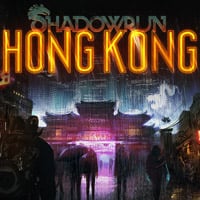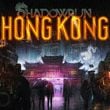Shadowrun: Hong Kong review – a step in the right direction
It seems that the developers from Harebrained Schemes actually did their homework, because Shadowrun: Hong Kong turns out to be significantly better than Shadowrun Returns.
The review is based on the PC version.
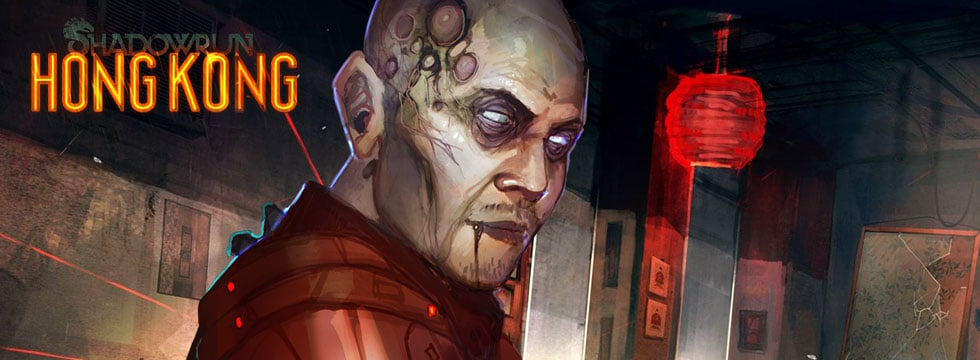
- immersive, engaging story;
- well-constructed, climatic world, full of interesting NPCs;
- good variety of missions keeps the experience fresh;
- combat system and character advancement;
- revamped Matrix;
- the visuals;
- improvements of every major technical aspect of the game;
- the editor is back;
- the atmosphere.
- schematic plot structure;
- less than inspiring companions;
- your choices have no significant impact on the story;
- interactions with the environment.
Kickstarter has a soft spot for Harebrained Schemes, and it’s no wonder - not many developers can (but they are welcome to try) resurrect a cult classic tabletop RPG universe and deliver a successful digital adaptation for a measly 2 million dollars. With the 2013 Shadowrun Returns they did just that. The game’s enormous success (later multiplied by the Dragonfall expansion pack) earned Jordan Weisman the gaming community’s blessing, which his team promptly took advantage of – at the beginning of 2015 a new Kickstarter initiative was announced. The promise of “One more game. Even better.” was enough to make the fans shiver in anticipation, and the one million two hundred thousand bucks they gathered was enough to deliver a very solid sequel. Let’s make this one clear – Shadowrun: Hong Kong, in comparison to the previous installments, is a next step in evolution – a step meaty enough and sophisticated enough to have no remorse spending the dozen hours enjoying it.
„Here, you make the choice of who you are.”
The setting’s layout should be no surprise to the long-standing fans of the game franchise – the Hong Kong of year 2056 is the same old, linear city, cleverly divided into bigger locations to make it seem more open than it really is. The levels are now significantly bigger, but their layouts don’t remind you of Fallout - that’s not their ambition at all; think more Deus Ex. In general, the setting is a successor to Dead Man’s Switch’s Seattle and Dragonfall’s Berlin – a cyberpunk fantasy world where shotgun-wielding orcs, trolls wearing tailor-made suits or goblins stuffed with cyber-enhancements to the point of jingling raise no eyebrows. Where the magic and brilliance of a fantasy adventure wore off long ago, leaving it to be tainted by the darkness and filth of the world, whose citizens are ruled by corruption and ever-present moral decay; where you assume any deal to be rigged and where powerful megacorps eventually have their way with everything, drowning their problems in either blood or money. Prepare to visit places like the port district of Heoi – your base of operations, always basked in neon lights and full of immigrants fencing illegal wares to people with no identity, the run-down Walled City - district intended to become Hong Kong’s showpiece or the Whampoa district, which you can’t cross without witnessing an act of organized crime. Despite the aforementioned linear structure, Weisman’s team managed to build a coherent and elaborate world that stays true to the source material – that’s what I call a perfect foundation to produce a full-blooded RPG experience.
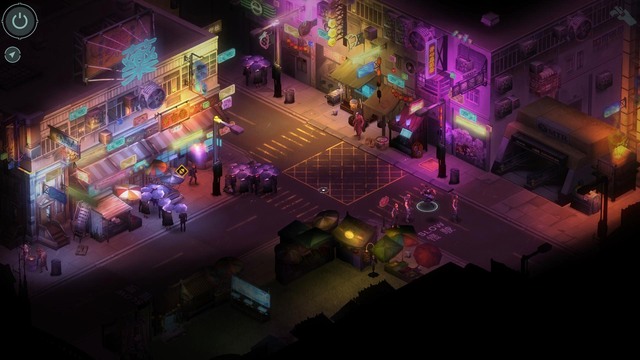
The first impression is reinforced by the game’s story, which is somewhat more down-to-earth than previously. The multi-layered “corporate crime story” from Dead Man’s Switch was replaced with a typical story of a protagonist who comes to Hong Kong in hope of meeting his step-father. He then accidentally ends up caught in a plot that will force him to abandon his past and become a shadowrunner – a mercenary, living on the margins of society, hired to brush with the law on an hourly basis. The game’s plot is wrapped in a mysterious, dream-like atmosphere that hints that “something bigger” is inevitably coming. This dynamic and mood captivates from the very beginning but after an hour or so we see the first hints of staleness. The protagonist’s objective is clear as day and those who try to hinder it are of the usual sort (“I have what you want, but first, I want you to do something for me. Would you kindly?”) forcing us to take part in side-quests and extending the game with no real reason to do so. Luckily, the narrative, via the distinctive written inserts, keeps the story together, describing events and scenes in a fluid manner. This old yet clever type of narrative – lacking cutscenes and spoken dialogues, just like in the source material – urges the player to make use of their own imagination, leading to a deeper immersion in the game’s storyline.
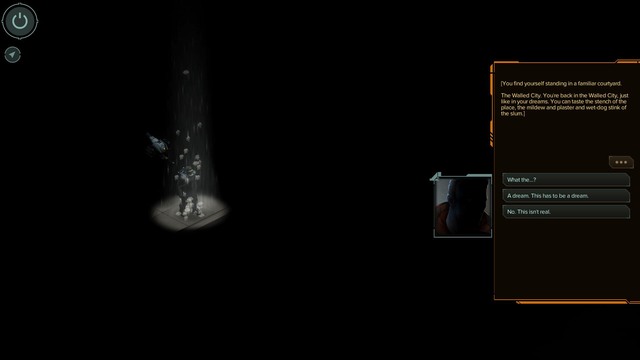
You’d be wrong if you thought the protagonist is a typical no-name, quite the opposite, actually – we can personalize virtually every aspect of the character. To determine his/her appearance and traits we get an elaborate character editor, essentially the same one we’ve used before in Shadowrun Returns. By combining various skills, exclusive to race and/or specialization, we can create either a jack-of-all-trades or a master-of-one type characters. Be vary though, your character build does have an impact on the gameplay – if you under-develop certain skills, completion of some secondary objectives may become impossible; brutal force may become the only solution to some of your problems or you can miss out on the whole sections of gameplay. Fortunately, you may also be able to avoid such seemingly hopeless situations thanks to the etiquettes (perks in the Shadowrun universe), which are now more balanced and useful (previously, one of them was a lot more handy than the others). All in all, during the first playthrough, I had the impression that I may want to do it again, to check out other possible paths and/or approaches– that’s how HBS keep their game fresh. As I said, I may be willing to do just that.
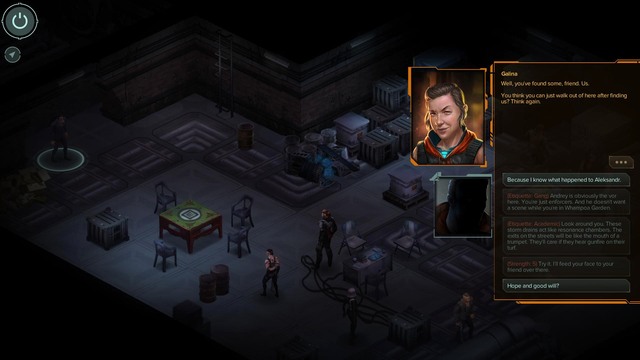
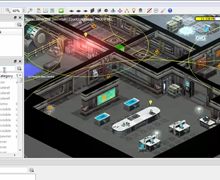
The level editor that allowed you to create your own locations and scenarios makes a reprise in Shadowrun: Hong Kong, offering some additional features and support (limited but still) for the previously released player-made content. The spirit of creativity lives beyond Seattle!
What keeps you in front of the screen is the integrity of Hong Kong– it lives, as you will notice when talking to any NPC on the streets or at the office. The NPCs shoulder the credibility of the whole setting, since interactivity is nearly nonexistent – limited to picking up some nuyens or a medical kit, when you find one. In other words: clicking won’t get you any loot, and additional information (concerning the mission and nothing but the mission) can be found in a few, selected terminals - this hasn’t changed since Shadowrun Returns. This means that all the hard work of building up the atmosphere and keeping things credible is left to the city’s residents, and they do a surprisingly fine job – surprise comes from the fact, that their stories and characters can be more engaging than anything you see in your party. The climatic descriptions served together with the dialogues (and a hefty amount of stage instructions that add to the movie-like feeling) may be responsible for that, but I believe, more than anything, that it’s the way you aren’t forced to know everything about supporting characters, for example: Ambrose, the wheelchair-bound cyberware dealer will remain nothing more to you, if you don’t ask him about his personal history or his thoughts on the future of Hong Kong. This approach clearly illustrates how a small, well-thought-over story complementation can replace other narrative means and achieve a similar, outstanding result.
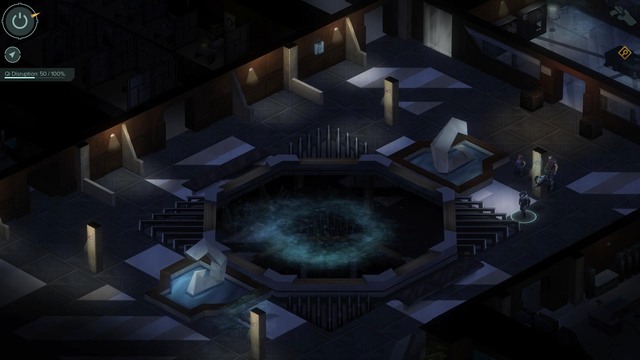
Different, but not too different
When confronted with the content-packed setting, the missions forming core of the gameplay fall somewhat short, but manage to keep a reasonable standard. While most of your missions are not connected to the main objective, their design has improved significantly – especially in terms of diversity. As an example, one of the missions requires you to infiltrate the top floor of a heavily-guarded facility and… move some furniture. That’s it. Changing the interior design against the rules of Feng Shui will cause the corporation’s employees’ work efficiency to plummet. Many of the missions include “surprise events” like, for example, emergency evacuation within a determined number of turns. The featured options to keep things civilized are a nice touch – there’s always more than one path to nearly every objective. Furthermore, in Hong Kong, drawing your weapon is a choice – enemy encounter doesn’t have to become a shootout, there are other, more clever solutions at your disposal. At the same time, some things were overlooked; the biggest one being the series’ trademark: the choices have no long-term impact on the story whatsoever. Let’s set aside the fact, that there were maybe two cases when I was faced with a choice that wasn’t morally black-and-white. I’d like to see a choice that has far-reaching consequences, something more than run-of-the-mill surrogates like a pay cut or one-time frown from your employer. That’s a waste of potential to leave it at that.
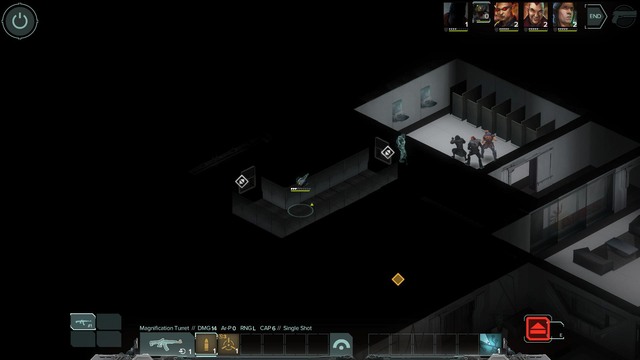
The one thing troubling Shadowrun Returns was the lack of option to save the game, except at the beginning of the level. The concept, while prized for its oldschool charm among the veterans, hasn’t met with the best reception among others and with the release of the Dragonfall campaign, the creators decided to implement a quicksave feature, which is present in Hong Kong as well.
One more, or perhaps three more things that could have been better are the default members of your party that accompany you on the missions. It doesn’t take long to notice that they’re all basically stand-ins forced on you by the plot. As characters, they are bland, superficial and fall flat in comparison to the supporting NPCs or the distinctive companions from Dragonfall. The impression refuses to go away even as the game keeps whacking you over the head with walls of text and dialogues in attempt to make you care about them. Sorry, but for me they were just pawns on the battlefield; the battlefield that was basically an improved reiteration of the combat from Shadowrun Returns. Once again, the combat is turn-based, and firefights focus around making good use of cover (more than anything!), a wide range of weaponry and combining various abilities and items. Your chances to defeat enemies without a significant loss of health can be improved by buying better weapons, cyberware (improve character stats), armor or spells – there are many different options, especially since you have your party’s whole equipment at your disposal. Abundance of classes allows you to employ interchangeably magic, drones, samurai swords, and standard firearms, while the improved and more intuitive interface (supporting hotkeys) provides a smooth and pleasant experience. If you’re afraid that the difficulty level will be “uneven”, as it sometimes happened in the previous installment, don’t worry – Hong Kong is overall fairly well-balanced, setting you against the challenging but not the impossible. Since learning the ropes, I was able to completely forget about how dated the combat mechanics are and completely focus on the pleasures of tactical encounters.
Another pleasant surprise turned out to be looking through the eyes of a decker and accessing the Matrix – the cyberspace sequences were completely refurbished and are now a combination of arcade gameplay with equally arcade minigames; crude methods are hardly necessary. Forget about digital brawls – to access sensitive data you just have to avoid the Watcher patrols (easy but time-consuming) and crack the security with a correct code sequence or by deciphering a string of symbols. If you’d like to engage the Watchers nevertheless, you’re free to do so (they’re no real challenge) but be prepared for a quick system overload and a spike of gameplay difficulty afterwards. The “new” Matrix is the only radical change – no other gameplay element from Shadowrun Returns was subjected to such comprehensive reprogramming (a fitting description, if I’ve ever seen one).
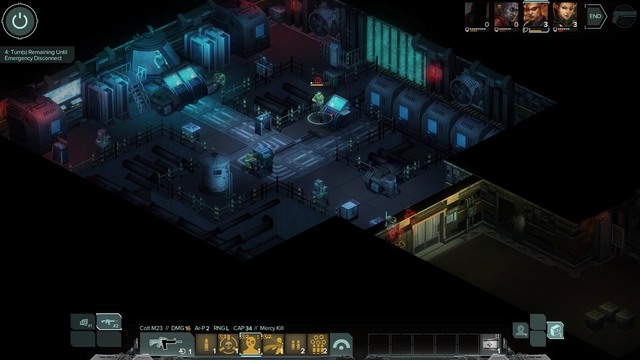
The emperor’s better clothes
When it comes to things noticeable at first sight, the visuals have to be mentioned – improved graphics looks up-to-date and do a fine job enhancing the carefully-designed, intricate and distinctive game locations that affirm the overall atmosphere accordingly. The locations, although still closed, have gained more space and lost some of their previous claustrophobic feel. The colors – ever-present on the alleys of Hong Kong thanks to the neon lights – build a pleasant contrast with the toned-down surroundings, and the 2D backgrounds you see here and there remind you that this game aims for a coexistence of the old and the modern. The anti-aliasing filter and post processing implementation, that mask the game’s minor deficiencies, are equally noteworthy, allowing the game to look the part as a modern, if isometric, visual experience.
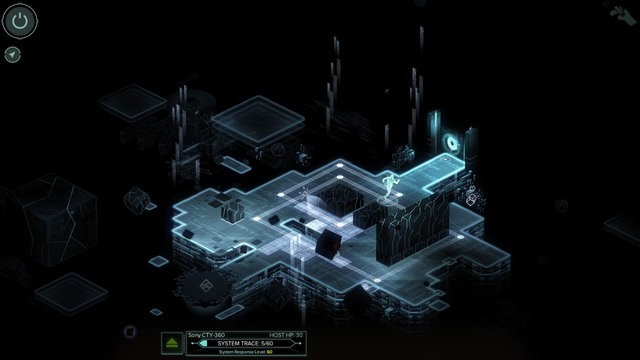
Various elements of the visuals, like a set of blocks, build the mood of the newest game from HBS together with a matching, atmospheric soundtrack. The music, dominated by ambient electronic melodies with a tinge of oriental sounds, is accompanied by short, hand drawn cutscenes.
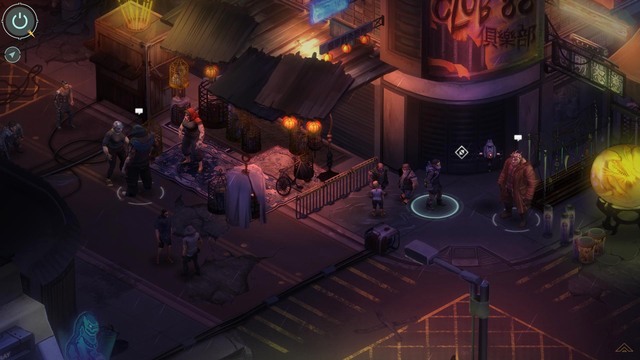
See Hong Kong and live to tell the tale
Shadowrun: Hong Kong is something I would call the final polish – a title that may not have a ground-breaking scope but, while being reasonably big, is brimming with ambition to create something more. Hong Kong took from its predecessor the good bits as they were, improved on the mediocre bits and added something extra. Although the game’s not flawless in fixing its past mistakes, there can be no doubt that it has become a part of the Shadowrun legacy.
Today, when classic CRPGs experience a progressive decline in popularity (in spite of the relatively successful games like Pillars of Eternity or Wasteland 2, Shadowrun aims for a comeback with its solid gaming experience – a juicy blend of RPG mechanics and dynamic action. Perhaps some of you will see this installment as just a big expansions or a DLC on steroids. Perhaps the game’s creators were under the same impression, which resulted in the very appealing price of their work. Hong Kong is definitely worth a shot – it is far more likely to pleasantly surprise your rather than disappoint.
Shadowrun: Hong Kong
Shadowrun: Hong Kong review – a step in the right direction
It seems that the developers from Harebrained Schemes actually did their homework, because Shadowrun: Hong Kong turns out to be significantly better than Shadowrun Returns.
